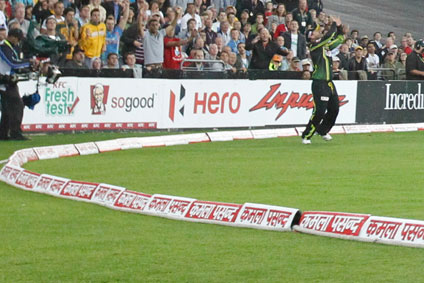
 |
| Index | ||||||
|
Boundary, fence, rope  The boundary is the limit of the field of play and is usually indicated in some way. The preferred method of doing so is by laying a rope or marking a white line or by setting regularly-spaced posts or small wooden or plastic markers along the ground Sometimes the boundary, or part of it, might be a physical object - a fence, the edge of a canal, even a large tree Umpires should always check with both captains before a match that everyone knows what the boundaries are on that particular ground so there are no misunderstandings later The boundary marking itself is regarded as outside the field of play. If a ball hit by the striker hits the boundary marker - a rope, for instance - without bouncing first it will count as a boundary 6 If a fielder, running to stop the ball, fields it inside the boundary, but any part of his person - even just the extreme tip of his toes - touches the boundary while he is still in contact with the ball, the striker will be credited with a boundary 4 That's the reason why umpires in televised matches will often ask the third umpire to check replays of a fielder stopping the ball near the boundary. The difference might be the extra runs that could change the result of a match | ||||||